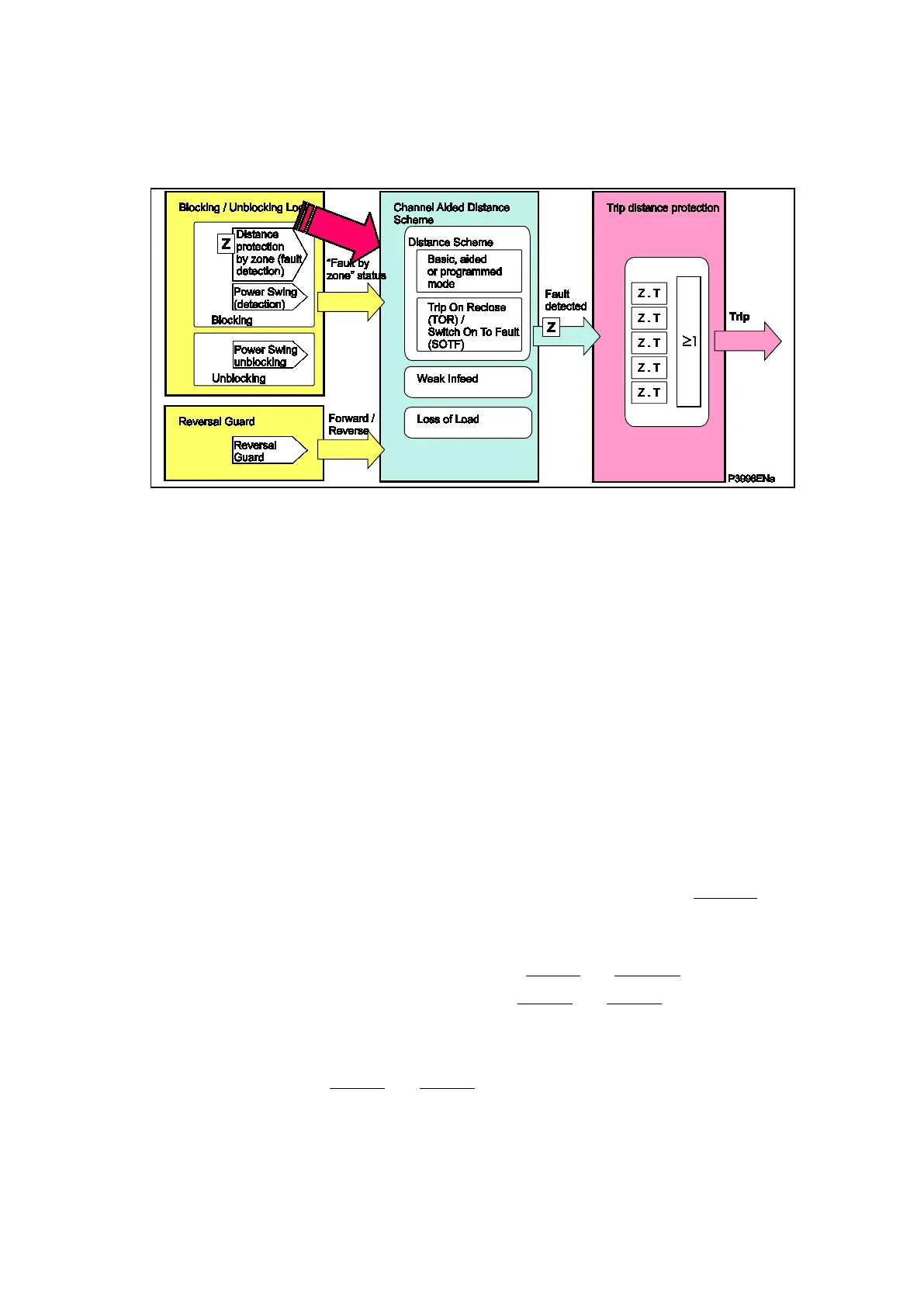44x/EN AP/Hb6
-46 MiCOM P40 Agile
3.2 Channel Aided distance schemes
The following diagram gives the logic of the distance protection:
Figure 21: Channel aided distance scheme in the distance protection diagram
This section details the “Channel Aided Distance schem” path.
The blocking / unblocking logic with power swing manages the distance protection logic.
• If enabled, the unblocking function carries out a function similar to Carrier receive
logic,
• Weak infeed allows for the case where there may be no zone pick up from local end,
• TOR & SOTF (Trip On Reclose and Switch On To Fault) applies specific logic in case
of manual closing or AR closing logic,
• Trip Distance Protection issues the trip order according to the distance algorithm
outputs, the type of trip 1P (1-phase) or 3P (3-phases), the distance timers, and the
logic data such as power swing blocking,
• Loss of Load manages a specific logic for tripping 3P in accelerated Z2 in the absence
of a carrier,
This section details the scheme configuration of the distance protection.
3.2.1 Standard Scheme
The following channel aided distance tripping schemes are available when the Standard
program mode is selected:
• Basic (+ zone 1 extended) schemes,
• Permissive Underreach Transfer Trip Schemes PUP Z2 and PUP Fwd;
• Permissive Overreach Transfer Trip Schemes POP Z2 and POP Z1;
• Weak infeed logic to supplement permissive overreach schemes;
• Unblocking logic to supplement permissive schemes;
• Blocking Schemes BOP Z2 and BOP Z1;
• Current reversal guard logic to prevent maloperation of any overreaching zone used in
a channel aided scheme, when fault clearance is in progress on the parallel circuit of a
double circuit line.
3.2.1.1 Standard Mode: Basic
The Basic distance scheme is suitable for applications where no signalling channel is
available. Zones 1, 2 and 3 are set as described in this section. In general, zones 1 and 2

